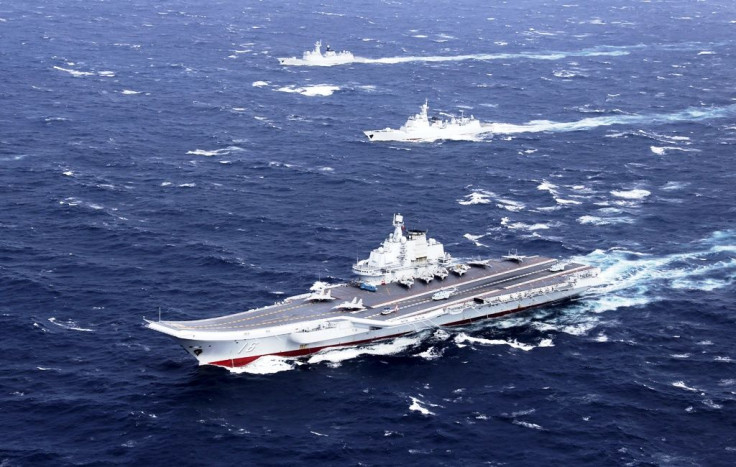China Deploys 'Carrier-Killer' Missiles, Starts Invasion Drill As US Carrier Patrols South China Sea
KEY POINTS
- Reports say it is the first time the DF-26 missiles are seen at their current training sites
- The missiles pose a threat to both U.S. Navy, and Indian forces facing Chinese troops in the Himalayas
- The beach landing drills are a threat to Taiwan
- A U.S. carrier strike group entered South China Sea on Sunday
Beijing has countered the entry of a U.S. aircraft carrier strike group into the contested waters of the South China Sea by launching military drills that involve both land-based long-range missile launchers, and warships and naval docking ships that can be used for a beach invasion.
According to the South China Morning Post, China has sent its DF-26 missile launchers to a training site in Shandong province in the east and Korla in the far-western Xinjiang region. The missiles, which can strike targets as far away as 5,000 kms, can be used to target ships and are often called "carrier killers."
The threat from the missiles can keep U.S. carriers and their aircraft far away from strike range in a potential conflict.
According to Andrei Chang, editor-in-chief of the Canada-based Kanwa Defence Review, the PLA had deployed 16 launchers for the DF-26 missiles to its Qingzhou base in Shandong, and another in Korla. He thinks launchers pose a threat to the U.S. naval base in Yokosuka, and also to India.
Indian and Chinese troops are involved in a bitter stand-off at their common Himalayan border since a clash last year with crude weapons led to scores of fatalities on both sides. Both sides have amassed troops, tanks, missiles and aircraft on their sides of the border. Indian and Chinese troops also clashed without firearms in India's north-eastern border last week although there were no fatalities reported.
But Chinese military expert Zhou Chenming maintained that the DF-26 was in Korla for training. Zhou said: “It’s not the first time the DF-26 has been there, but the first time pictured by satellites. The powerful DF-26 was not needed to deal with India."
Zhou also said DF-26 missiles could target foreign warships if they entered Chinese sea territory. “But China would not deploy the DF-26 to the front line and coasts, because it would be more easily found and destroyed by the U.S.’ ship-borne tomahawk missiles,” he said.
But the optics of the "carrier-killer" missiles in active military drills and the message they send to China's rivals cannot be missed.
Other reports have said that three of China’s front-line docking ships — the Wuzhishan, Changbaishan and Kunlunshan of the southern theater navy — had started an exercise focusing on actual combat training and beach landing exercises. The drill, which began Wednesday, will have more warships taking part.
China’s Maritime Safety Administration has prohibited entry into a parts of the waters in the Gulf of Tonkin to the west of the Leizhou peninsula from Jan. 27 to Jan. 30.
The use of the docking ships for the drill is particularly worrisome for Taiwan, which China considers a breakway province. China regularly sends war planes over Taiwan's air defense identification zone to test the island's defenses and to harry and tire its forces.
The arrival of the USS Theodore Roosevelt strike group in the disputed waters earlier is being seen as a warning to China, which has stepped up its intrusions. The State Department has maintained that Washington will continue to deepen ties with Taiwan and ensure its defense from Chinese threats.
Beijing also has expansive claims on the South China Sea, which are contested by its neighbours and other littoral states including the Philippines, Brunei, Malaysia, Indonesia, Vietnam and Taiwan. These disputes and China's militarization of artificial islands have also raised tension in the area. The U.S. regularly sends its warships and aircraft over the waters to assert its right to free navigation as per international rules. China says the U.S. is the cause of the rising tension in the region.
“The United States frequently sends aircraft and vessels into the South China Sea to flex its muscles,” China's foreign ministry spokesperson Zhao Lijian had said about the U.S. Navy's presence in the South China Sea.
.

© Copyright IBTimes 2024. All rights reserved.





















